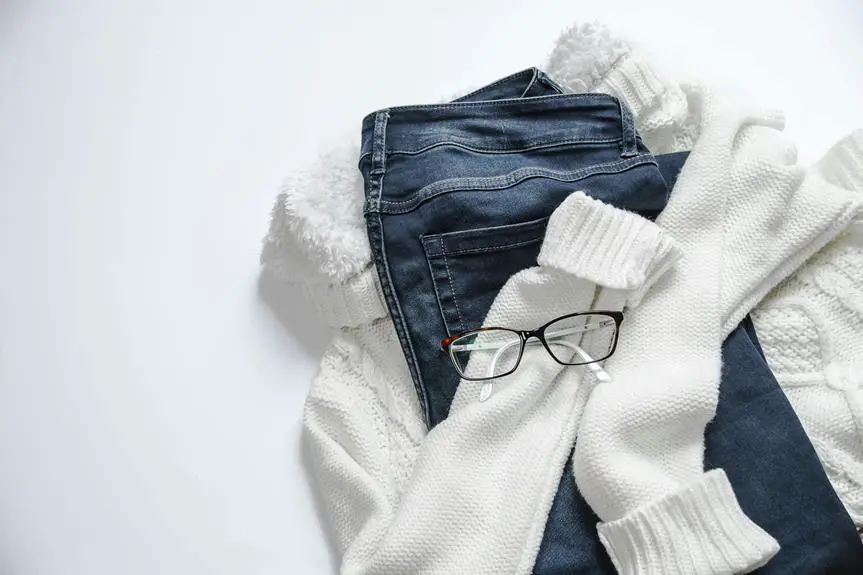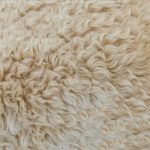When you think about fabrics for warm weather, madras plaid might come to mind for its stylish appearance, but how does it actually perform in terms of breathability? Its lightweight, cotton composition suggests optimal airflow, allowing for moisture evaporation. The open weave design enhances comfort during those humid days. However, you might wonder how this compares to other fabrics and whether it truly stands up to the humidity challenges you face. Understanding these aspects could shift your perspective on choosing the right fabric for warmer climates.
Table of Contents
Understanding Madras Plaid Fabric
What makes Madras plaid fabric unique is its lightweight construction and vibrant patterns, which have been crafted from cotton for optimal breathability. This fabric isn't just about looks; it's built to perform, especially in warmer climates. The intricate weaving process creates a texture that's airy and engaging, allowing air to circulate, a feature you'll appreciate on hot days.
As you wear Madras plaid, you'll notice that the colors contribute to its charm while also making it versatile. You can easily pair it with shorts, jeans, or even skirts, depending on your style. Unlike heavier fabrics, Madras plaid drapes well, allowing for ease of movement without feeling weighed down.
Additionally, the history of Madras plaid touches on its cultural roots, often linked to the artisan craftsmanship of India. Understanding this background adds depth to your appreciation of the fabric.
The Importance of Breathability
Breathability is crucial for staying comfortable in warm weather, ensuring you can enjoy outdoor activities without feeling overheated. When considering fabrics, you'll want to focus on how well they allow air to circulate. This reduces moisture buildup, keeping you dry and cool. Here's a quick comparison of breathable and non-breathable fabrics:
| Fabric Type | Breathability |
|---|---|
| Cotton | High |
| Polyester | Low |
| Linen | High |
| Nylon | Medium |
Choosing breathable materials like Madras plaid means you'll likely remain comfortable during hot days. Fabrics that don't breathe can trap heat and moisture, leading to discomfort while you're trying to enjoy the outdoors. Madras plaid's unique characteristics contribute to its ability to promote airflow, making it a favorite for warm climates. When you wear breathable clothing, you're less likely to experience overheating or excessive sweating, allowing you to stay focused on your activities instead of adjusting your attire. Prioritize breathability in your wardrobe choices, and you won't just feel better—you'll enjoy your adventures more.
Fabric Construction and Weave
Madras plaid's unique fabric construction and weave play a key role in enhancing its breathability and overall comfort. When you're choosing garments made from this fabric, you'll notice how the open weave allows air to flow freely, keeping you cool even on the hottest days. The lightweight nature of the fabric contributes significantly to its performance, and you'll appreciate how it feels against your skin.
Here are three key aspects of Madras plaid's fabric construction and weave:
- Open Weave Structure: The loose interlacing of the threads creates small gaps, promoting airflow and reducing heat retention.
- Lightweight Cotton Blend: Typically made from pure cotton or a cotton blend, Madras plaid fabrics offer softness while remaining lightweight, which enhances comfort during wear.
- Vivid Patterns: The unique dyeing methods used in Madras plaid not only produce vibrant colors but also ensure that the fabric remains breathable, as the dye doesn't compromise the structure of the weave.
Moisture-Wicking Features
When you're choosing Madras plaid for hot weather, moisture-wicking features are essential.
The fabric's unique composition helps pull sweat away from your skin, keeping you comfortable even in humid conditions.
Understanding how these properties work can make a big difference in your overall comfort.
Fabric Composition and Properties
The unique fabric composition of Madras plaid enhances its moisture-wicking properties, keeping you comfortable even in warm conditions. This lightweight material is typically made from a blend of cotton and synthetic fibers, which work together to efficiently pull moisture away from your skin. As you wear it, the fabric helps regulate your body temperature, ensuring you can enjoy your day without feeling sweaty or sticky.
Here are three key factors that contribute to its moisture-wicking features:
- Breathable fibers: The cotton content allows for air circulation, which helps evaporate sweat more quickly, while synthetic fibers boost durability and moisture management.
- Hydrophilic properties: These fabrics attract moisture from your skin, drawing it away and allowing it to evaporate on the surface, keeping you dry and comfortable.
- Lightweight structure: The construction of Madras plaid ensures that it doesn't cling to your body, enhancing airflow and promoting a cooling effect.
Together, these features make Madras plaid an excellent choice for those hot, humid days when you still want to look fashionable and feel fresh.
Performance in Humid Conditions
In humid conditions, the moisture-wicking features of this fabric shine, keeping you dry and comfortable while you navigate sweltering environments. Madras plaid is designed to draw moisture away from your skin, effectively reducing that clammy feeling. When you're sweating, this moisture-wicking ability means the fabric pulls sweat to the surface, where it can evaporate quickly.
As you wear it, you'll notice the difference, especially during outdoor activities or long days. The lightweight nature of the fabric combined with its breathability ensures that air circulates around you, preventing overheating.
Instead of clinging to your body, the madras plaid creates a cooling effect, allowing you to focus on your day rather than discomfort. Plus, this moisture management helps reduce the risk of chafing, adding to your overall comfort.
You can trust that madras plaid won't only keep you looking stylish but also performing well in humid conditions. So next time you're faced with warm, sticky weather, reach for your madras plaid items and enjoy the benefits of staying cool and dry. It's the smart choice for humid days ahead.
Comparison With Other Fabrics
When you compare Madras plaid to cotton, you'll notice key differences in breathability and fabric weight.
While cotton offers comfort, it can sometimes feel heavier, especially in warm weather.
Madras plaid, with its lightweight construction, often provides a more breathable option for those hot summer days.
Madras Plaid Vs. Cotton
Madras plaid offers a distinct style compared to cotton, blending vibrant patterns with lightweight breathability that makes it perfect for warm weather. While both fabrics have their merits, you'll find some key differences when you choose between them.
Here are three points to consider:
- Aesthetic Appeal: Madras plaid stands out with its colorful checks and eye-catching designs, adding a playful touch to your outfit. Cotton, on the other hand, comes in various styles, but its solid colors or simpler patterns may not provide the same visual impact.
- Lightweight Feel: Madras plaid is often made from a lighter weight cotton weave, resulting in fabrics that feel less bulky and more breathable, especially in high temperatures. Traditional cotton can sometimes feel heavier, depending on its weave and density.
- Versatility: While both fabrics are versatile, madras plaid works great for casual outings, beach days, and summer events, giving you that laid-back vibe. Cotton, being more classic and neutral, can transition well into different settings but may lack the lively spirit of madras.
These factors can help you decide which fabric best suits your needs.
Breathability and Fabric Weight
Breathability in fabrics can significantly impact your comfort level, especially during hot weather, and comparing madras plaid with other materials reveals its lightweight advantage.
Madras plaid, typically made from cotton or a cotton blend, is designed with an open weave that allows for better air circulation. This makes it an excellent choice for sweltering days.
When you look at other common fabrics like polyester or heavier cotton twill, you'll notice they can trap heat and moisture. Polyester lacks the breathability you'd want in the summer, while heavier cotton materials can feel stifling.
In contrast, madras plaid's lightweight and airy structure helps wick away sweat and keep you feeling cool.
If you're considering linen, it's also worth noting that while linen offers fantastic breathability, it can wrinkle easily and lack the vibrant patterns that madras plaid provides.
Ideal Use Cases for Madras Plaid
Ideal for casual outings and warm-weather events, Madras plaid adds a vibrant touch to your wardrobe while keeping you comfortable. This lightweight, breathable fabric is perfect for various settings where you want to look stylish without sacrificing comfort.
Here are three ideal use cases for incorporating Madras plaid into your life:
- Picnics in the Park: Whether you're lounging on a blanket or enjoying a barbecue, Madras plaid shirts or dresses keep you looking fresh and colorful.
- Beach Days: Layer a Madras plaid shirt over your swimsuit for a chic cover-up. You'll stay comfortable while enjoying the sun and sand.
- Casual Gatherings: Perfect for summer parties or brunches, a Madras plaid outfit can make you stand out in a relaxed way. Pair it with some jeans or shorts for that effortless look.
Madras plaid's fun patterns and lightweight fabric ensure you're both stylish and comfortable, making it a go-to choice for those warm-weather adventures.
When temperatures rise, this fabric shines in ensuring you remain cool and fashionable.
Frequently Asked Questions
Can Madras Plaid Be Used in Winter Clothing?
Yes, you can use madras plaid in winter clothing, especially when layered. Its lightweight fabric can keep you stylish while pairing well with heavier materials. Just ensure you add insulation for optimal warmth in colder months.
How Does Madras Plaid Compare to Cotton for Breathability?
When comparing Madras plaid to cotton, you'll find that cotton generally breathes better due to its softer, looser weave. However, Madras plaid's lightweight nature can still offer decent airflow, making it a comfortable choice.
Is Madras Plaid Suitable for Athletic Wear?
Madras plaid isn't typically suitable for athletic wear. Its lightweight design may feel comfortable, but it lacks the moisture-wicking properties essential for intense workouts, making other fabrics a better choice for your active lifestyle.
What Colors Are Available in Madras Plaid Fabric?
When exploring madras plaid fabric, you'll find vibrant colors like red, blue, green, and yellow, often in various combinations. These lively hues give your garments a cheerful touch, perfect for casual or stylish summer wear.
Are There Any Specific Care Instructions for Madras Plaid?
To care for madras plaid, you should wash it in cold water and avoid bleach. Iron it on a low setting if needed, and hang it to dry for best results. It'll maintain its vibrant colors!
- How Does Ring Spun Cotton Affect Garment Fit and Shape Retention? - August 13, 2024
- What Are the Challenges in Producing Ring Spun Cotton? - August 13, 2024
- Is Ring Spun Cotton Suitable for Plus-Size Clothing? - August 13, 2024







